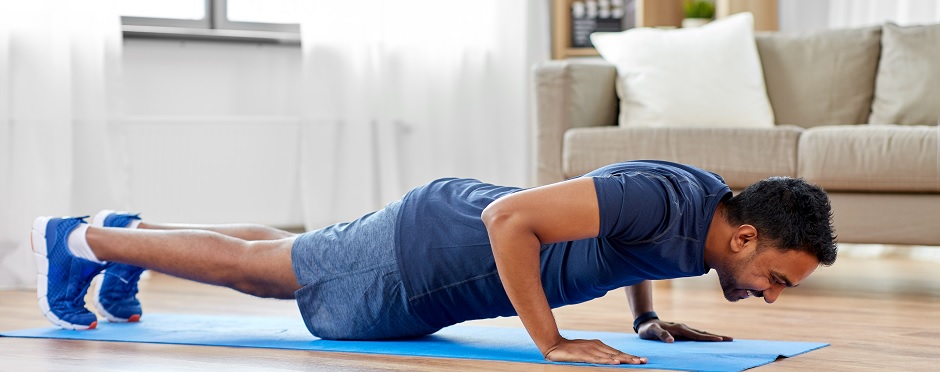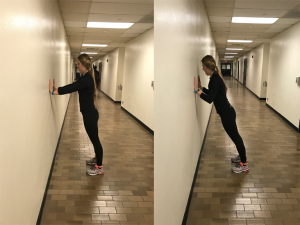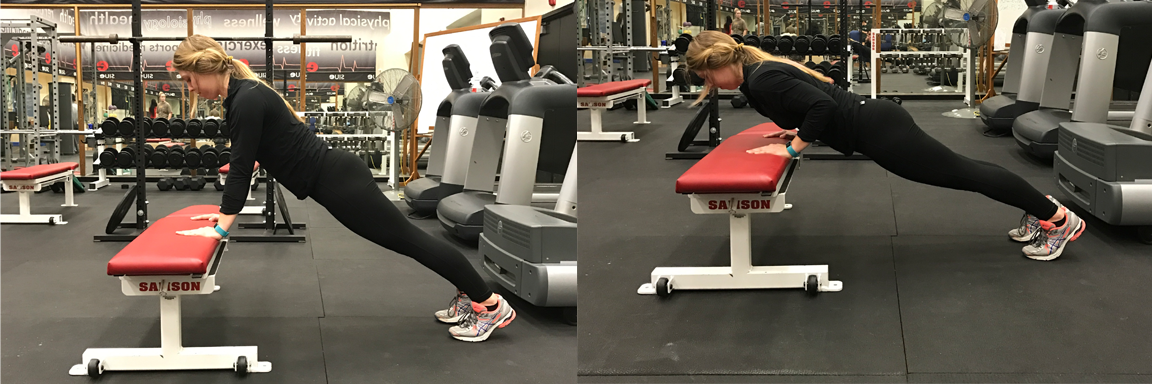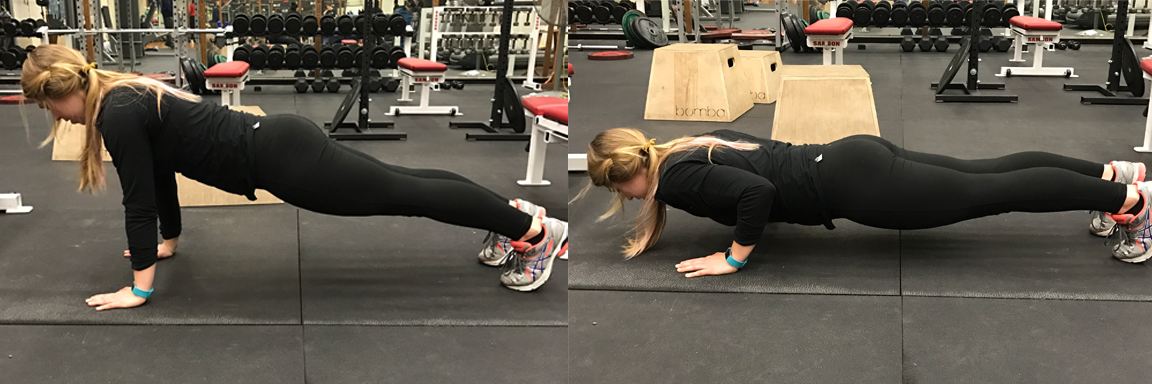
Stronger than Yesterday: Progressing a Push-Up
1 CommentAs mentioned in Stronger than Yesterday: Progressing a Pull-Up, our modern society spends much of the day sitting. This behavior can effectively change the natural posture of the body, leading to weaker and tighter muscles. Adding simple strength training moves into your exercise routine can be a wonderful way to reinforce good posture and reduce chronic pain or injury.
While the pull-up primarily strengthens the muscles of the back, too much pulling without a balance of pushing can lead to muscle imbalances. This makes the push-up a great exercise to partner with your pulling routine. Just like life, there is always a little give and take!
Benefits of the Push-Up
The push-up requires activation of the pectorals, deltoids, triceps and core.1 Though these are the main muscles worked, the rest of the body provides support and coordination. Actively practicing push-ups or push-up modifications encourages benefits such as:
- Improved posture
- Increased core stability
- Enhanced shoulder strength and stability2
Progressing the Push-Up
There are many ways to progress to a full push-up. Although the push-up is a safe and effective exercise when done correctly, it is important to consider your safety when performing this exercise, as it asks a lot from your shoulders and upper body. If this movement is relatively new to your workouts, take time to progress through the various modifications to ensure quality movement from start to finish! Push-up exercises to consider include:
- Wall Push-Up
- Facing a wall, stand arm’s length away
- Place your hands at shoulder level
- At the top of this push-up, engage the shoulders, core and glutes
- Begin to let your chest and whole body move toward the wall
- Keep your elbows close to the torso to avoid “winging”
- Stop just before your nose touches the wall
- Pressing hands into the wall, return to the starting position3

- Incline Push-Up
- Using a bench, table or block, position your hands shoulder width apart
- Step your feet back until you are in an incline plank position
- Keep your whole body braced and begin to lower toward the surface
- Keep your elbows close to the torso to avoid “winging”
- Stop just before your nose touches the surface
- Pressing hands into the surface, return to the starting position4

- Negative Push-Up
- Allow your body to come into a full plank position
- Hands should be beneath the shoulders and your feet should be propped up on the toes
- Keeping the whole body braced, begin to lower your body toward the floor
- Keep your elbows close to the torso to avoid “winging”
- For this exercise, allow your whole body to lower all the way down to the floor as slow as possible
- Once the belly is touching the floor, push yourself up and return to a full plank
- Repeat5

Practice to Build Strength
Practicing these fundamental movements will encourage the coordination of the muscles involved in the push-up. These exercises are also meant to help build strength to be able to do a push-up, or improve your current ability!
It is incredibly important to keep safety top of mind when performing these exercises. Proper form is key! If you experience pain in any of these movements do not continue and allow at least one day between training days. If pain that lasts more than a week, click the button below to schedule a free assessment at an Athletico location near you.
Free assessments are available in-clinic and virtually through our telehealth platform.
Happy pushing!
The Athletico blog is an educational resource written by Athletico employees. Athletico bloggers are licensed professionals who abide by the code of ethics outlined by their respective professional associations. The content published in blog posts represents the opinion of the individual author based on their expertise and experience. The content provided in this blog is for informational purposes only, does not constitute medical advice and should not be relied on for making personal health decisions.
References:
1. “Incline Push-Up.” n.d. ExRx. 28 January 2017. <https://www.exrx.net/WeightExercises/PectoralSternal/BWInclinePushup.html>.
2. Schoenfeld, Melody. How to Progress your way to a Perfect Push-Up. n.d. 26 January 2017. <https://breakingmuscle.com/fitness/how-to-progress-your-way-to-a-perfect-push-up>.
3. Smith, Jessica. “The Push-Up Progression Workout.” n.d. Shape. 26 January 2017. <https://www.shape.com/fitness/workouts/pushup-progression-workout>.
4. “Wall Push-Up.” n.d. Go4Life. 27 January 2017. <https://go4life.nia.nih.gov/exercises/wall-push>.
5. What Muscles Do Push-Ups Work. n.d. 29 January 2017. <https://www.md-health.com/What-Muscles-Do-Push-Ups-Work.html>.
6. Benefits of Push-Ups. n.d. 29 January 2017. <https://www.md-health.com/What-Muscles-Do-Push-Ups-Work.html>.

1 Comment
dave
Very nicely written article. Looking forward to many more articles in the future.
different push ups